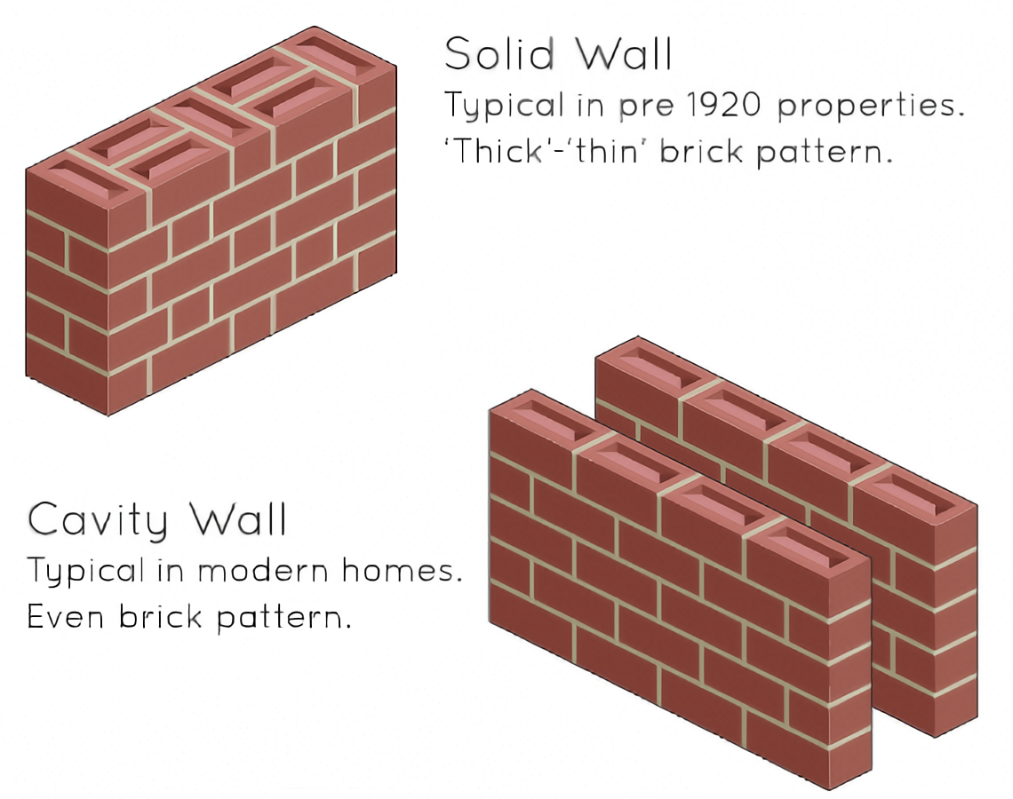
Cavity Walls & Solid Walls: Whats the Difference?
Brick Walls are generally built with 2-skins. Where two brick walls are built side-by-side, constructed in parallel and 'tied-in together' using bricks or steels ties.
Solid Walls:
Earlier brickwork construction methods simply used a row of 'headers' to connected to two brick skins together as the wall was going up. The practice of laying a course of bricks across the skins, then building 'stretcher bonded' sections on top of each header course by approximately 6 courses before lying another header bonded 'tie-in' course.
This creates many compartments inside the wall where air does not flow.
Walls built using this construction method are known as Solid Walls and must use breathable lime mortar to enable a natural breathing process to take place.

Cavity Walls:
Later brickwork construction methods replaced the row of 'brick headers' with cast-iron and later, steel brickwall-ties.
This removed the need for header bonded courses, this opened up the inner cavity (gab between the courses of brick) meaning brick walls could be ventilated using 'air-bricks'.
This gave birth to the glazed brick, which many Public Houses were built from following the advent of this new consturction method.
It meant walls could be built using non-breathable and much hardier/durable material such as many of todays widely used Portland Cement types.
Walls built using this construction method are known as Cavity Walls and don't require the bedding or pointing material to have breathable properties.


Write a Comment